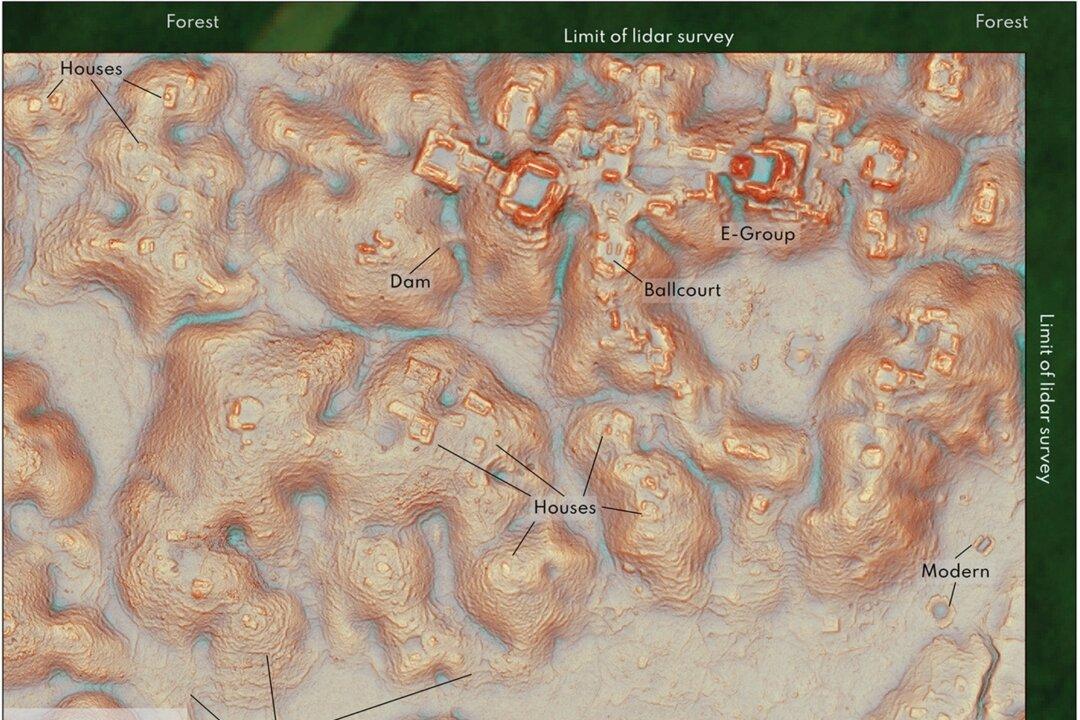MEXICO CITY—Archeologists in Mexico have discovered a huge, lost Mayan city, which they named Valeriana, hidden deep in the southern jungle of Campeche—a sprawling, urban settlement, replete with architectural marvels and agricultural infrastructure.
Why It’s Important
The discovery of what appears to have been a bustling urban landscape challenges the existing knowledge about the prevalence and density of ancient Mayan settlements.Valeriana was discovered by chance thanks to Lidar, or Light Detection and Ranging, a technology that uses lasers to map and analyze archaeological landscapes.
The dataset used for the study came from approximately 47 square miles of high-quality airborne Lidar data collected in 2013 as part of a forest monitoring project called Alianza and led by the Nature Conservancy in Mexico, to reduce emissions.
Key Quotes
“We argue that the Alianza data demonstrate a range of ancient settlement densities comparable to those documented by site-focused archaeological survey in the region, from nearly vacant rural landscapes to dense urban areas,” said the researchers in the study, published by Cambridge University Press.“The discovery of Valeriana highlights the fact that there are still major gaps in our knowledge of the existence or absence of large sites within as-yet unmapped areas of the Maya Lowlands,” added.
Context
Lidar technology revealed a sprawling, urban settlement, replete with architectural marvels and agricultural infrastructure.The classical-era Maya civilization dates back to the period between 250 and 900 AD, when it extended its dominion over present-day southern Mexico and what are now Belize, El Salvador, Guatemala, and Honduras.





